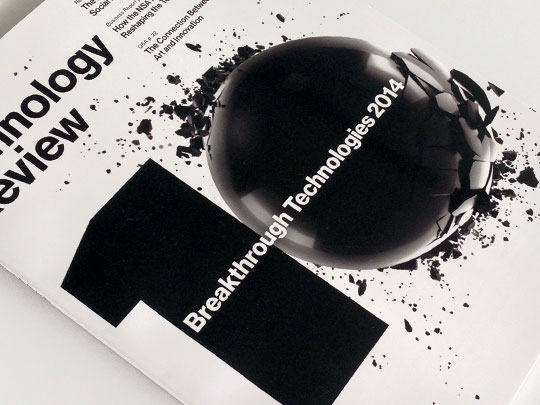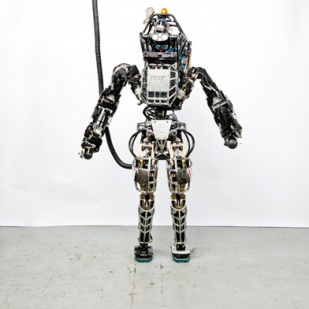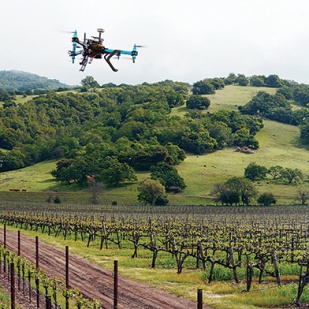Science and Technology Review: Top Ten Breakthroughs in Technology Innovation in 2014 (Photos)
Release date: 2014-05-13

As we all know, "innovation" is the soul of the entire technology industry and the source of technological development. Every year we will see a variety of technological innovations, some of which have improved our lives, and some have even changed the direction of human society. The Massachusetts Institute of Technology's Science and Technology Review recently named the “Top 10 Most Breaking Technology Innovations in 2014â€. These technologies are not only very innovative today, but will also play an important role in the next few years. .

Introduction to Genome Editing: Gene editing of primates carrying targeted mutations provides scientists with new tools and methods for studying complex, genetically related brain diseases. Breakthrough: Using genomic tools to build two monkeys carrying specific gene mutations. Major research institutions and individuals: Yunnan Provincial Key Laboratory of Biomedical Sciences, Jennifer Doudna of the University of California at Berkeley, Zhang Feng of the Massachusetts Institute of Technology, and George Church of Harvard University.

Introduction to Agile Robots: Agile robots have good balance and flexibility. They can walk on uneven terrain like ordinary people. In the future, they can help humans perform tasks in some dangerous environments. Breakthrough: It can cope with uneven terrain. Major research companies (institutions): Boston Dynamics, Schaft and Honda.

Introduction to Highly Privacyed Smartphones: The "Snowden" incident has led people to re-examine the importance of mobile phone information security, which has also spawned a highly private smartphone product. Breakthrough: Keep personal privacy information highly confidential. Major research companies (institutions): Blackphone, CryptoPhone and Open Whisper Systems.

Introduction to Micro 3D Printing Technology: The use of new materials for micro 3D printing expands the range of 3D printing products, including artificial organs and blood vessels. Breakthrough: 3D printing technology has entered the field of artificial organs. Key researchers: Jennifer Lewis of Harvard University, Michael McAlpine of Princeton University, and Keith Martin of Cambridge University.

Introduction to mobile collaborative office software: The rapid spread of smart phones has made mobile office use by many companies and individuals, and mobile collaborative office software has occupied an important position. Breakthrough: Users can create, edit, and sync files on mobile devices. Major research companies (institutions): Quip, Quickoffice, Box, Dropbox, Microsoft and Google.

Smart grid-connected power generation: Through big data analysis and artificial intelligence to accurately predict energy use, and then integrate more intermittent renewable energy such as wind and solar into the grid. Breakthrough: Accurately predict wind and solar energy. Major research companies (institutions): Energy Excellence, General Electric, and the American Center for Atmospheric Research.

Introduction to Head-mounted Display: After years of development, head-mounted displays have finally begun to appear in our lives as molded products. This new type of display device is very likely to change the way human society communicates and games in the future. . Breakthrough: The price has come to an acceptable range for normal consumption. Major research companies (institutions): Oculus, Sony, Vuzix and Nvidia.

Introduction to Neuron Chips: Traditional computer chips have been approaching performance limits after decades of development, and neuron chips mimic the process of processing information in the human brain, helping computers cope with different situations faster. Breakthrough: Real-time simulation of the brain's process of processing information helps scientists create cognitive systems that interact with the surrounding environment in real time, facilitating the development of artificial intelligence. Major research companies (institutions): Qualcomm, IBM, HRL Labs and the Human Brain Project.

Agricultural drone profile: This low-cost agricultural drone is equipped with advanced sensors and image processing modules to closely monitor the growth of crops and improve water use efficiency and pest management efficiency. Breakthrough: equipped with a camera, support for remote operation, and the price is less than $1,000. Major research companies (institutions): 3DRobotics, Yamaha and PrecisionHawk.

Introduction to the 3D imaging of the human brain: This 3D imaging of the human brain, which has been drawn for ten years, first dissects the human brain at the cellular level, providing neuroscientists with a guide to interpret their infinite complexity and a more complete view of humans. Brain structure. Breakthrough: The structure of the human brain is presented on a 20 micron scale. Principal investigators: Katrin Amunts of the Ulrich Research Center in Germany, Alan Evans of the Montreal Institute of Neurology, and Karl Deisseroth of Stanford University .
Source: NetEase Technology
Disposable Pe Gloves,Disposable Polyethylene Gloves,Disposable Pe Plastic Gloves,Safe Touch Disposable Pe Gloves
HOLIK ASIA GROUP CO.LTD , https://www.holikasia.com
